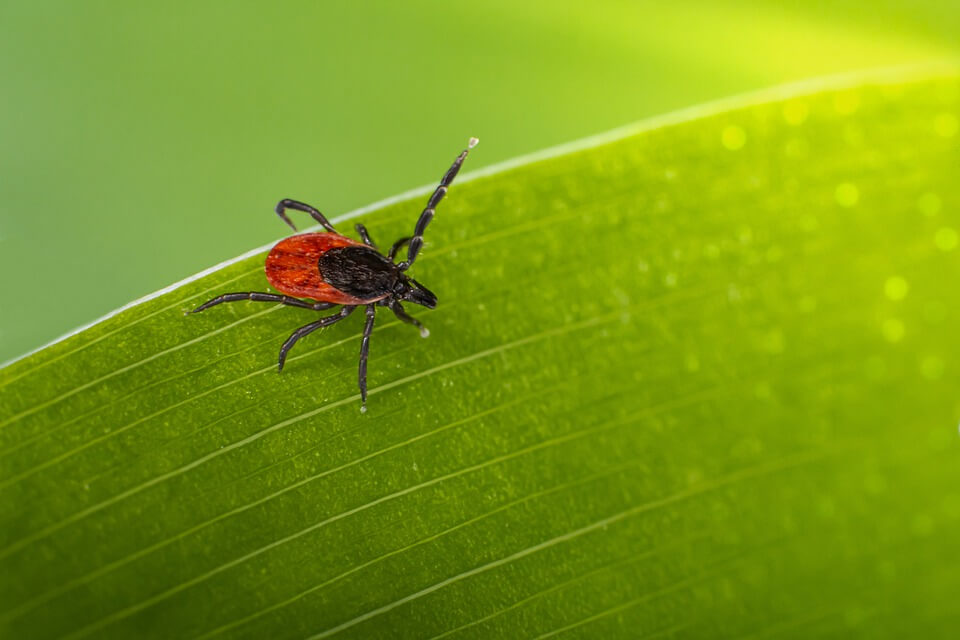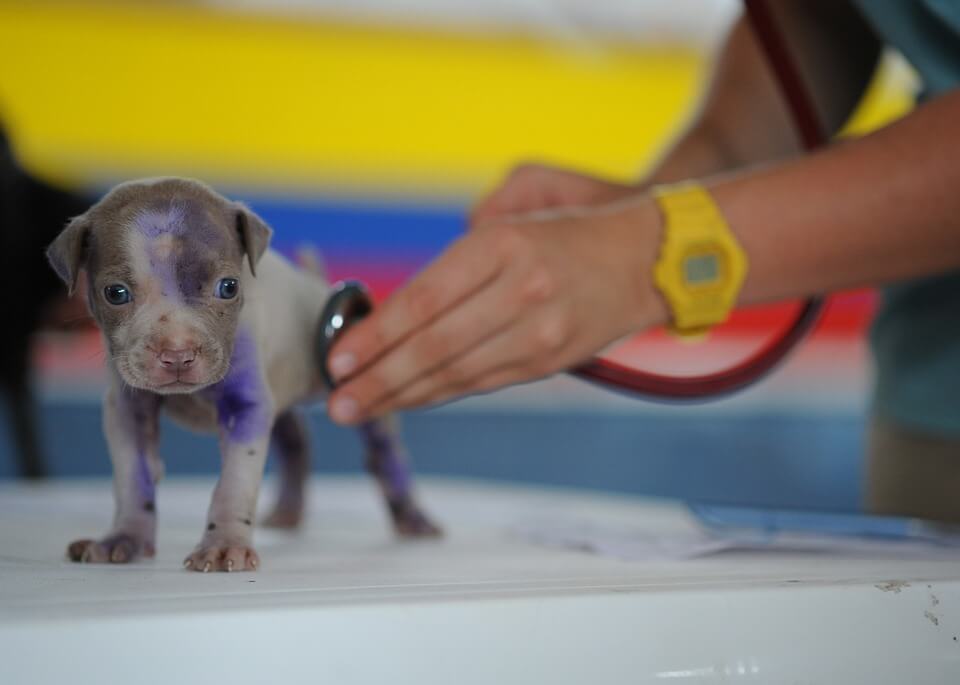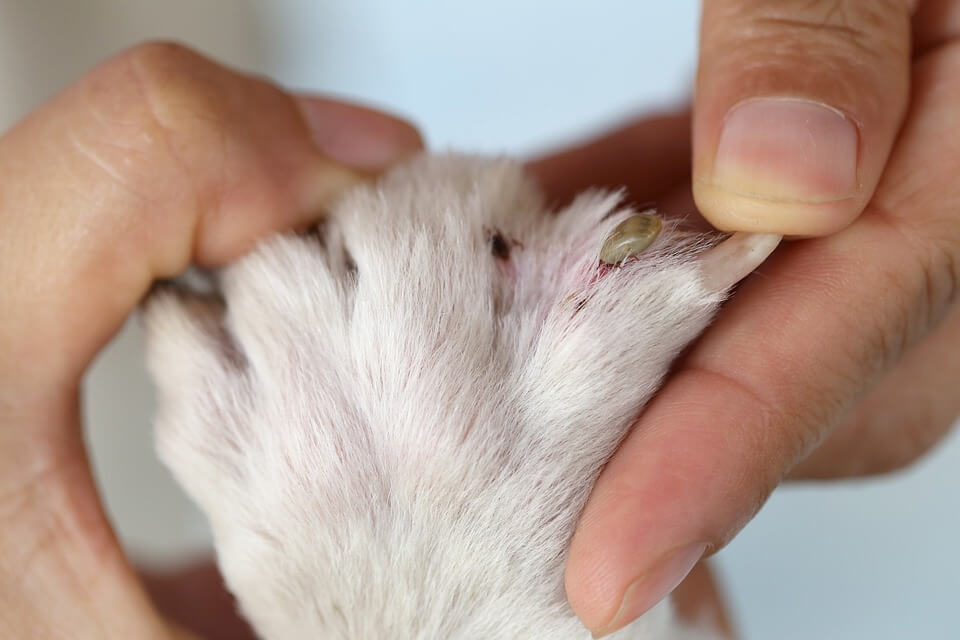Table of Contents
Lyme disease (Lyme borreliosis) is a bacterial disease caused by the Borrelia bacterium. Lyme disease is infectious and can be transmitted to humans, dogs, and other animals by a particular species of ticks.
In dogs, Lyme disease is caused when an infected tick bites a healthy dog; the bacteria then travel through the bloodstream to other parts of the dog’s body and cause problems in some organs, joints, and overall illness.
Lyme Disease Ticks. Where Do They Live?
Lyme Disease got its name in 1975, named after a coastal town in Connecticut called Lyme.
 Lyme disease-carrying ticks are likely to be found in tall grasses, thick bushes, marshes, and woods – waiting to stick onto your dog when they pass by. Lyme Disease can be transmitted by an infected tick once attached to a dog for 24 – 48 hours.
Lyme disease-carrying ticks are likely to be found in tall grasses, thick bushes, marshes, and woods – waiting to stick onto your dog when they pass by. Lyme Disease can be transmitted by an infected tick once attached to a dog for 24 – 48 hours.Lyme disease is active in every state in The USA, but infection risks vary from State to State. Over 90% of cases are from the Northeast, the Pacific coast, and Upper Midwest. The numbers in these areas are continually changing with recent deforestation, migrating deers, and bird populations; percentage rates in these areas are always changing, depending on the season.
A small number of cases come up each year along the West Coast, particularly Northern California. While in Canada, Lyme-positive dogs are mostly found in Southern Ontario and Manitoba. A fewer number are reported each year in Quebec and the Maritime Provinces.
How do Ticks Get on Dogs?
The tick acquires the Lyme disease bacterium when it feeds on an animal that has been infected, such as a moose, deer, or other mammals, and then transmits the bacterium to the next animal it feeds on.

Lyme Disease: What are the symptoms of Lyme Disease in Dogs?
- Loss of appetite
- Reduced energy level
- Fever
- Swelling of joints
- Lameness
- Generalized stiffness, discomfort, or pain
Symptoms can progress to kidney failure, which can be fatal. Neurological and cardiac severe effects can also take place.
How To Test a Dog for Lyme Disease?
The two blood tests for diagnosing Lyme disease in dogs are called the C6 Test and Quant C6 test. Veterinarians perform diagnostic tests, and a combination makes them of history, physical signs, and diagnostics.
 The C6 test detects antibodies against a protein called “C6”. The presence of the antibodies suggests an active Lyme infection. The C6 antibodies can be detected three to five weeks after an infected tick bites a dog and may be found in the bloodstream even before it shows signs of illness.
The C6 test detects antibodies against a protein called “C6”. The presence of the antibodies suggests an active Lyme infection. The C6 antibodies can be detected three to five weeks after an infected tick bites a dog and may be found in the bloodstream even before it shows signs of illness.
The next step is to do a Quant C6 test and urinalysis, which will help determine if antibiotic treatment is necessary.
How To Treat Lyme Disease In Dogs?
Treatment most times include antibiotics for at least 40 days; this resolves the symptoms quickly. In some cases, the infection will persist, and medication for a more extended period will be needed.
Treatment can also include other therapies aimed at resolving or relieving specific symptoms, and a qualified and licensed Veterinarian should administer every therapy.
Can I Get/Catch Lyme Disease From My Dog?
Dogs are not a direct source of Lyme disease infection for people. Lyme Disease can not be transmitted between pets or from pets to humans. Only an infected tick can transmit Lyme disease through their bites, so the answer is “No! You can’t catch Lyme Disease from your dog”. However, an infected tick can come into your house on your dog’s fur and get on you.
It’s a great idea to consult a Physician and a Veterinarian if your dog is diagnosed with Lyme disease as you and any other pet you have may have been in the same outdoor environment.
Check Out Some Other Canine Diseases Carried by Ticks
Ticks can carry several other diseases that affect dogs and sometimes less common but serious conditions like anaplasmosis and babesiosis.
Anaplasmosis also involves symptoms similar to those of Lyme disease. Babesiosis can present with a wide range of symptoms, from sudden and severe shock, high fever, and dark urine to a slowly progressing infection with more subtle clinical signs.
Diagnosis of both diseases includes blood tests similar to those used to check for Lyme disease.
How To Prevent My Dog From Lyme Disease
Inspect your dogs for ticks, especially after walks through the woods or grassy areas. Ticks are small and easy to miss if you are not paying close attention; look closely at your dog’s feet (and between toes), on lips, around eyes, ears (and inside ears), near the anus, and under the tail.
Remove ticks: The faster you find them, the less likely your dog will contract a secondary illness related to tick bites. Learn the proper method of tick removal. Invest in a pair of fine tweezers used for this purpose. If you are unable to do so, consult with a veterinarian.
 Ask your veterinarian to conduct a tick check whenever you visit. They’ll be able to find any you may have missed.
Ask your veterinarian to conduct a tick check whenever you visit. They’ll be able to find any you may have missed.
Prevent ticks from jumping on your dog with one of the many veterinary-approved flea and tick preparations available on the market. Talk to your veterinarian to find the best and appropriate product for your dog.
Keep grass around the house mowed as short as possible. Avoid walking into grassy patches in endemic tick areas.
Get your dog vaccinated. Vaccination could prevent your dog from getting Lyme disease. They may not be appropriate for some dogs, so talk with your vet about it.


